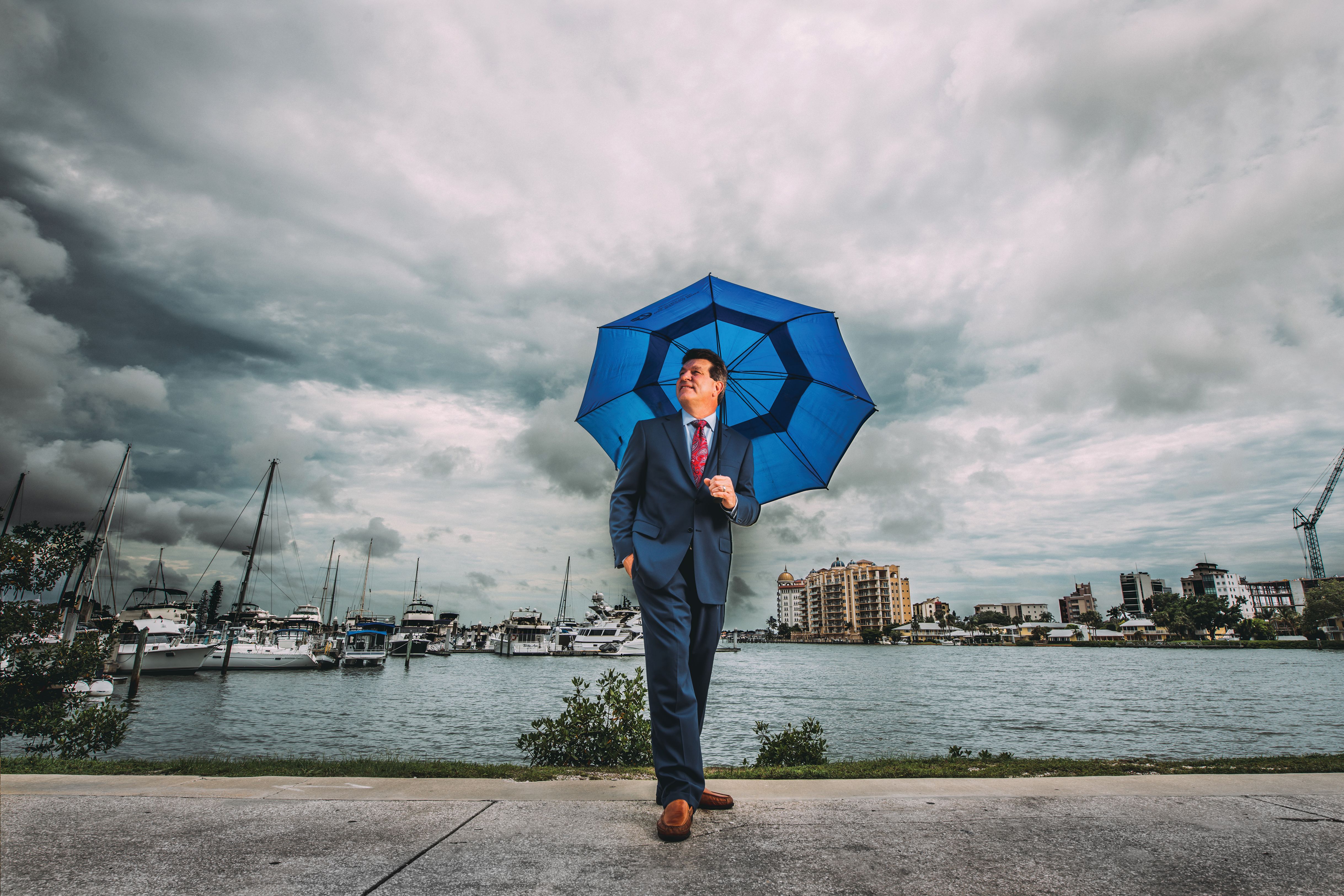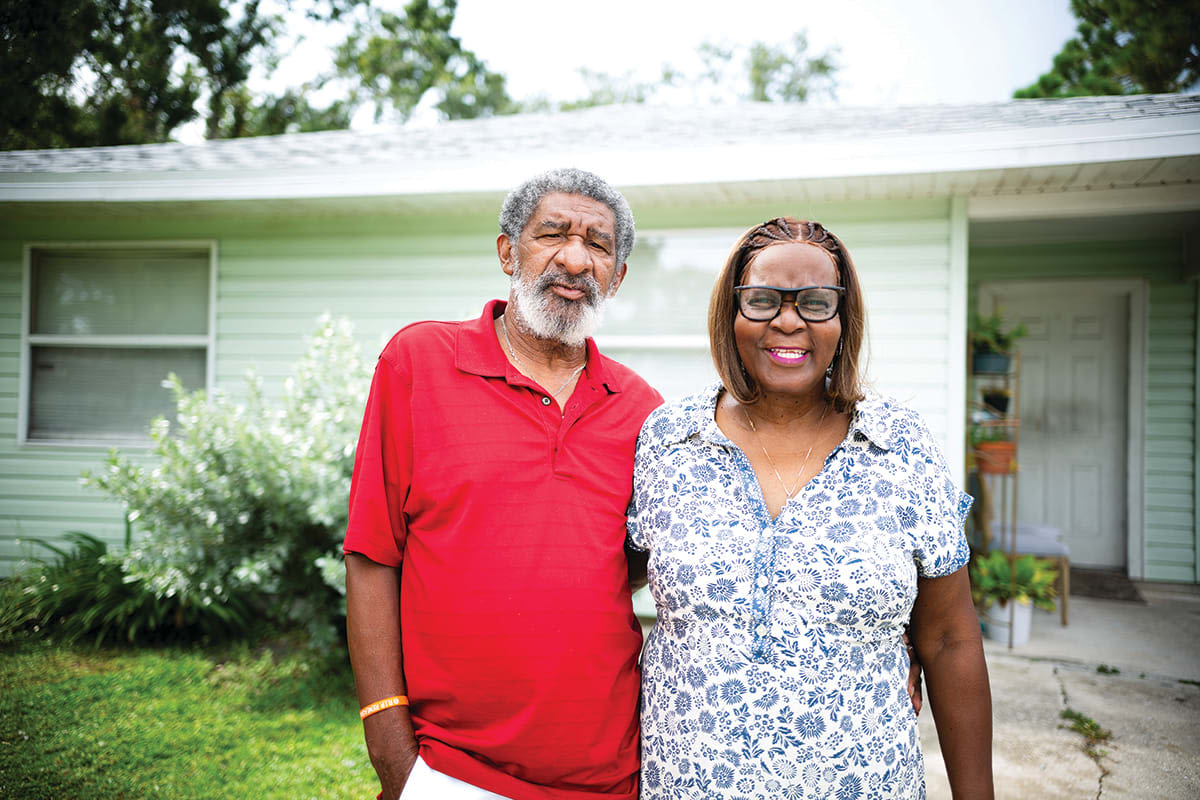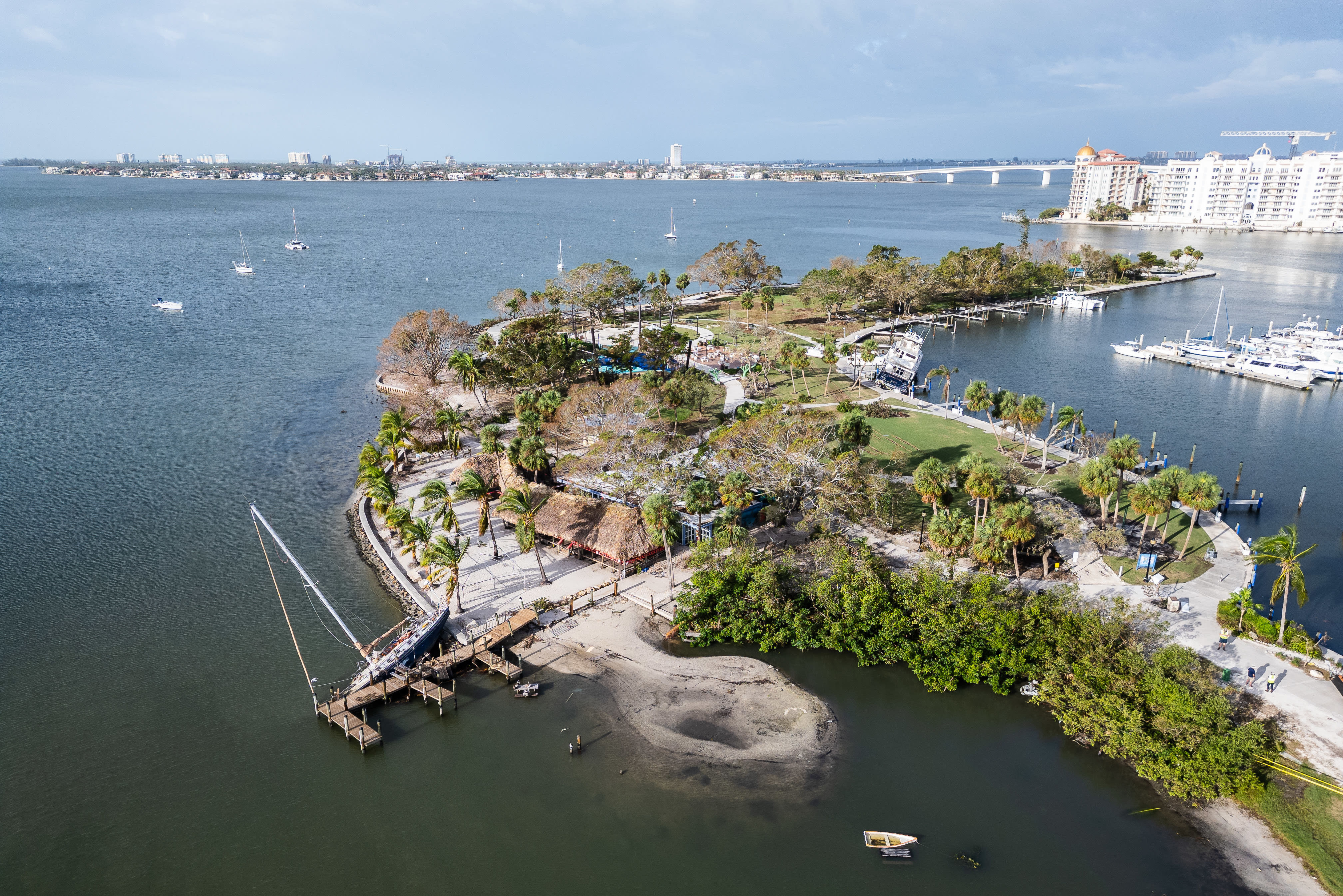What Exactly Does Storm Surge Mean?
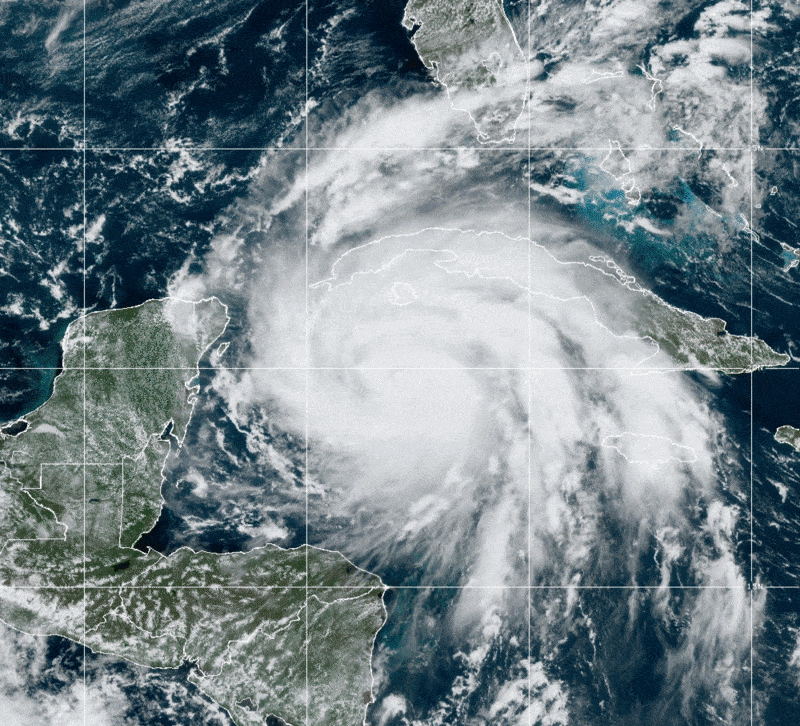
Hurricane Ian.
Image: NOAA
As we brace for hurricane season, words like "hurricane-force winds" and "storm surge" are coming up in casual conversation. While we may think of ourselves as weather professionals here in Sarasota-Manatee, the terminology got us thinking: what exactly do these phrases mean? Here's a primer.
Hurricane winds are measured on the Saffir-Simpson Hurricane Wind Scale, which categories hurricanes as 1-5, with 1 being the lowest. Storms that fall in Category 3 and above are classified as "major hurricanes." The categories specifically refer to wind speeds and the damage that can occur as a result of high winds.
| Hurricane Category | Winds (mph) | Damage |
| 1 | 75-95 | Very dangerous winds will produce some damage. Siding and shingles could see some damage. Additionally, there will be some broken tree branches and uprooted shallow trees. Power outages are likely as power lines and poles will likely be damaged in the wind. |
| 2 | 96-110 | Extremely dangerous winds will cause extensive damage. In a storm sustaining these winds, a complete power outage is to be expected. Shallow trees will likely be uprooted and cause blocked roadways. Homes will see significant roof and siding damage. |
| 3 | 111-129 | Devastating damage will occur. The winds in a Category 3 hurricane can cause a home's roof to lose its decking, the wood on which the roof is installed. As with the previous categories, a complete power outage is to be expected. |
| 4 | 130-156 | Catastrophic damage will occur. With winds of these speeds, a home can lose its entire roofing structure and even an exterior wall. Fallen trees and other debris can block roadways, potentially isolating residences. Power outages can last for weeks or even months, leaving the area uninhabitable. |
| 5 | 157-plus | Catastrophic damage will occur. In the event of a Category 5 hurricane, many frame houses will be destroyed due to roof loss and collapsed walls. Power outages will be sustained for weeks to months. |
As if lethal winds aren't enough to worry about, the closer you are to the coast, the higher the risk for storm surge. When a storm physically pushes water from the gulf toward land it creates a change in sea level, or a "storm surge".
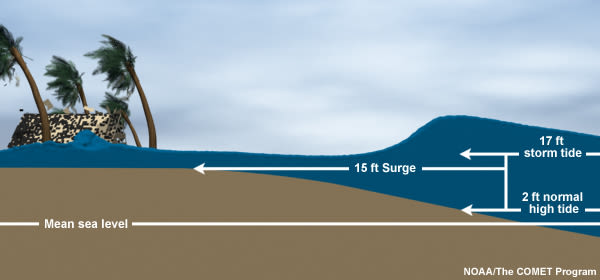
Storm surge.
Image: NOAA
Storm surge is nuanced and can be impacted by many factors, including the pressure of the storm, the wind intensity, the depth of the seafloor and the speed at which the storm moves ashore. Scientists can predict a potential storm surge, but as the storm changes so does the surge, which leaves room for error.
For example, if a storm has a 5-foot surge, water will be five feet above standard sea level—including tides. If a home is in the surge zone and located below 5 feet above sea level, it will flood.
For the most up-to-date information on storm surge, evacuations and more, sign up for alerts on the Sarasota County website and make sure to evacuate if instructed to do so.
